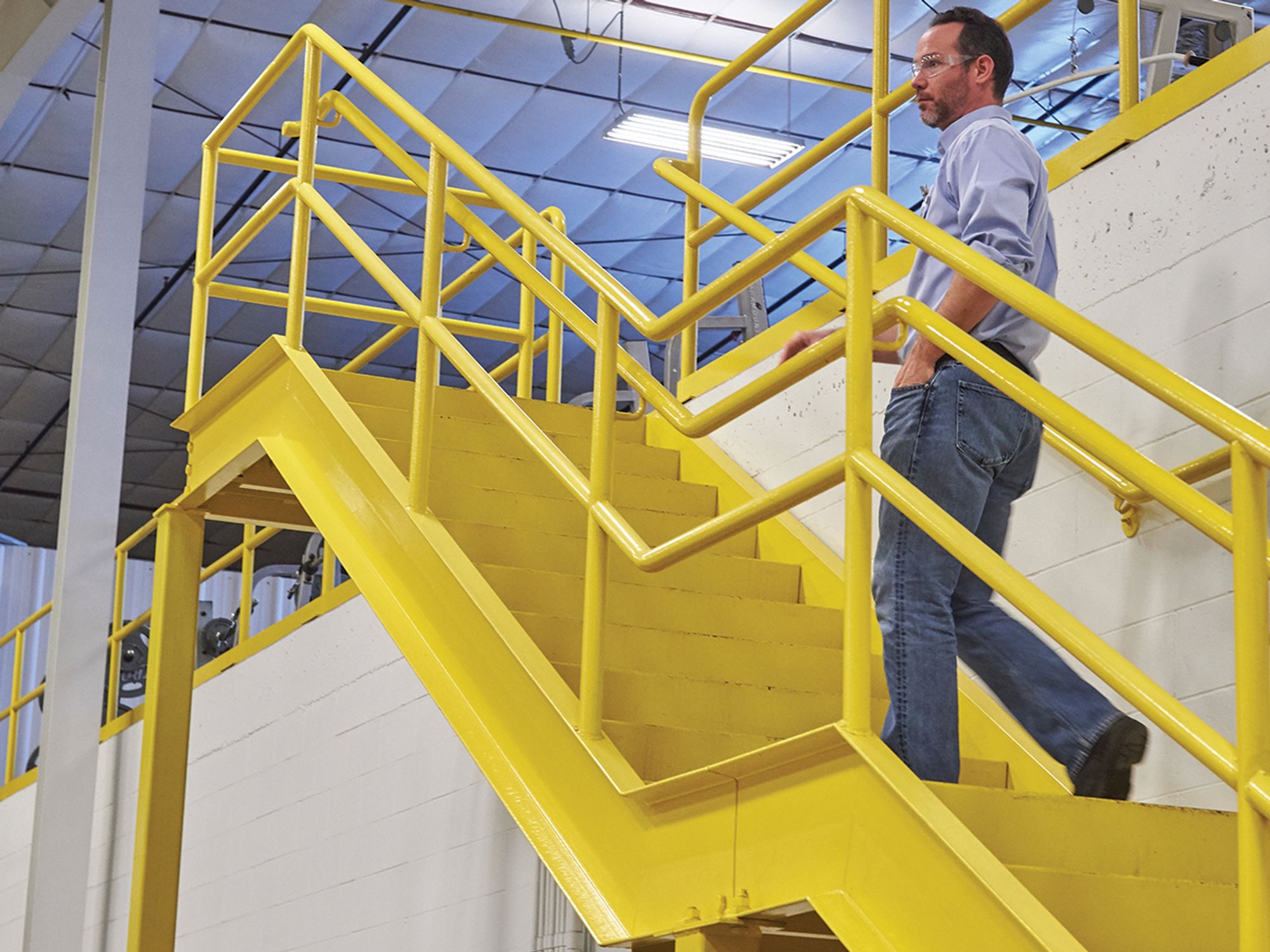InstituteSafety & HealthGeneral Industry SafetyWalking Working SurfacesStairway Railings and GuidesIn Depth (Level 3)Walking Working SurfacesEnglishAnalysisFocus AreaUSA
Stairway design requirements
['Walking Working Surfaces']

- OSHA provides design requirements for general stairways and standard stairs.
General stairways
The Occupational Safety and Health Administration (OSHA)’s general stairway provisions include:
- Using handrails, stair rail, and guardrail systems that meet the requirements of 1910.28 and 1910.29. Handrails give employees something to hold, and stair rails serve as fall protection. Guardrail systems are required to protect employees when stairways end on a platform or sections are divided by one or more platforms.
- Vertical clearance above any stair tread to an overhead obstruction must be at least 6 feet and 8 inches measured from the leading edge of the tread.
- Stair riser heights and tread depths must be uniform between landings.
- Stairway landings and platforms must be at least the width of the stairs and at least a depth of 30 inches. The depth is measured in the direction of travel.
- When a door or gate opens directly on a stairway, a platform must be provided. The swing of the door or gate cannot reduce the effective useable depth of the platform to:
- Less than 20 inches for platforms installed before January 17, 2017; and
- Less than 22 inches for platforms installed after January 17, 2017.
- At a minimum, any stair can support at least five times the anticipated live load, but never less than a 1,000-pound load applied at any point.
- Standard stairs are used for access from one walking-working surface to another when operations require routine travel between levels
- Alternate stairs (spiral, ship, or alternating tread-type) must be installed, used, and maintained in accordance with manufacturer’s instructions.
Standard stairs
Standard stairs must be provided for access from one structure level to another where operations necessitate regular travel between levels, and for access to operating platforms on any equipment which requires attention routinely during operations. Standard stairs must meet all the general stairway requirements, and also the following:
- Installation must be at an angle between 30 and 50 degrees from the horizontal,
- The maximum riser height must be no more than 9.5 inches,
- The minimum tread must be no less than a depth 9.5 inches, and
- The minimum stair width must be at least 22 inches between vertical barriers.
OSHA will consider standard stairs installed before January 17, 2017, to be in compliance if they meet the dimensions of Table D-1 of 1910.25.
